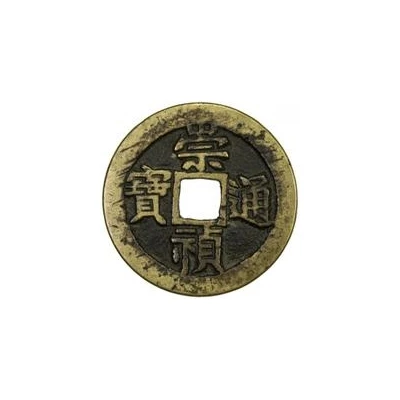2 Cash - Chongzhen Tongbao; southern type; with Ji ND
| Brass | - | 27 mm |
| Issuer | Empire of China |
|---|---|
| Emperor | Ming dynasty › Chongzhen (崇祯帝) (1627-1644) |
| Type | Standard circulation coin |
| Years | 1630-1644 |
| Value | 2 Cash |
| Currency | Cash (621-1912) |
| Composition | Brass |
| Diameter | 27 mm |
| Shape | Round with a square hole |
| Technique | Cast |
| Orientation | Medal alignment ↑↑ |
| Demonetized | Yes |
| Updated | 2024-10-03 |
| Numista | N#222787 |
|---|---|
| Rarity index | 100% |
Reverse
One Chinese ideogram to the right and one to the left.
Script: Chinese (traditional, regular script)
Lettering: 二秊
Translation:
Ji Hu
Last (of series) / 2 Cash
Edge
Plain
Comment
Hartill suggests the larger, heavier coins (around 26 millimetres and weighing 1.3 Qian) were the first 1 Cash pieces produced. By 1630, coins minted in the north weighted 1.0 Qian and coins minted in the south weighed 8 Fen or less.The Northern types and the Southern types are differenciated by the left part of Zhen.
- Northern types: 礻
- Southern types: 示
Interesting fact
One interesting fact about the Standard circulation coin 2 Cash - Chongzhen (Tongbao; southern type; with Ji) ND (1630-1644) from Empire of China made of Brass is that it was used as a form of currency during a time of great economic change in China. The Chongzhen era saw the introduction of a new monetary system, which included the use of copper coins like this one, and the abolition of the traditional use of cowry shells as currency. This coin was also unique in that it featured a square hole in the center, which was used to thread a string through, allowing people to carry multiple coins together. This feature was a departure from the traditional round hole found in earlier Chinese coins.

